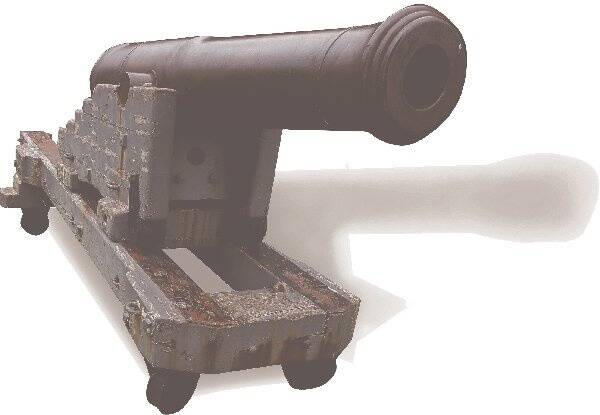
A TRAIL of old cannon along south-west Victoria's coastline gives a glimpse of the era when communities feared attacks from foreign fleets.French, Russian and even American naval attacks were feared by the British colonial powerbrokers worried about their lucrative trade from Down Under being plundered.So they arranged for Victoria's key ports to be defended with obsolete British weapons dating back to the Napoleonic wars.Between 1866 and 1887 the colonial government developed a network of permanent fortifications overlooking the Southern Ocean.Today 14 large cast iron cannon shipped out for the Victorian defence still remain in the south-west along with 12 other cannon and artillery pieces from the 19th and 20th centuries.The displays in Warrnambool, Port Fairy and Portland are regarded as extremely rare, representing one of the world's largest intact collection of artillery pieces within a single defensive network, apart from major colonial ports.Generations of local children have played on the old weapons with their muzzles pointing out to sea, yet the historical significance has been largely overlooked.Now there's a push to make the south-west 'cannon trail' a must-see tourism attraction for national and international visitors.A new brochure funded by Warrnambool City, Moyne Shire and Glenelg Shire councils promoting the coastal fortifications has hit the tourist information shelves.The brochure maps show the cannon locations and a short description and history.With the exception of the Flagstaff Hill Maritime Village fort, all the guns and fortifications can be seen free of charge. The oldest are at the Warrnambool Botanic Gardens, Battery Hill reserve at Port Fairy and the Portland Battery. Barrels for the Portland cannon was cast in Scotland in 1811 while Warrnambool and Port Fairy cannon were cast in Scotland in 1813.They have stood the ravages of coastal weather fairly well except for the timber under-carriages.The Warrnambool gardens display cannon has been fenced off for about two years because of safety fears over the decaying timber. Friends of The Gardens member and historian Pat Varley expects a replica undercarriage will be built next year and the cannon re-opened to the public. "This has been classified by the National Trust because of its social significance," she said."Hundreds of greasy little legs and hands have kept it from rusting."Almost everyone in Warrnambool can remember sitting on the cannon. "The cannon came to the gardens in 1910 through the curator Charles Scoborio who had been a drummer with the volunteer defence corp."When the corp disbanded in 1910 he secured one from the old fort on Cannon Hill for the gardens."Less than four decades earlier two of Britain's military advisors, General Jervois and Captain Scratchley, identified suitable sites in Australia for defences.Their report said they should be "sufficiently formidable to act as a powerful deterrent to attack by hostile warships". Fortifications included concrete gun emplacements - which can be still seen at Flagstaff Hill and Port Fairy - armouries, powder magazines, officers huts and earth ramparts. Drill halls and orderly rooms were also built, several of which still remain. Artillery pieces were grouped in a battery operated by a garrison of local militia who trained at the battery and drill hall.According to the brochure, at least 75 men were assigned to each battery at the height of the Russian scare in 1884.Naval artillery was favoured because it had the firepower to destroy ships. The type used in the Napoleonic wars could fire a 16.3 kilogram cannon ball 2.5 kilometres.A few years later larger cannon were made which could fire 2.9 kilometres and by the late 19th century rifled barrels enabled 32.3 kilograms shells to be fired up to 3.7 kilometres to pierce iron armour on battleships.By 1909, with less fears of attack, the fortifications were downgraded and became redundant.The sites again became strategic briefly during World War II.Flagstaff Hill's fort cannon still work and are activated regularly by a visiting re-enactment group.The display piece in front of the maritime village had been at the adjacent Cannon Hill battery and later outside the former town hall precinct in Timor Street until the early 1970s.Now at Cannon Hill there are two German Howitzers which are trophies from the World War I Allied offensive in 1918 and two World War II surplus guns - a 40mm anti-aircraft and a mortar field gun.The trophy guns follow a military tradition of capturing an enemy's battle standard or major weapon.
Subscribe now for unlimited access.
or signup to continue reading

